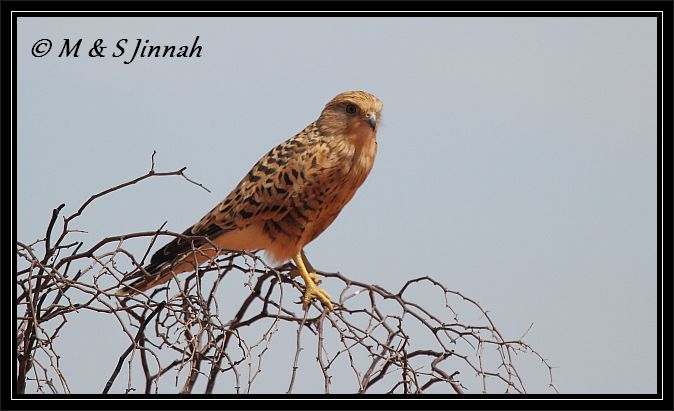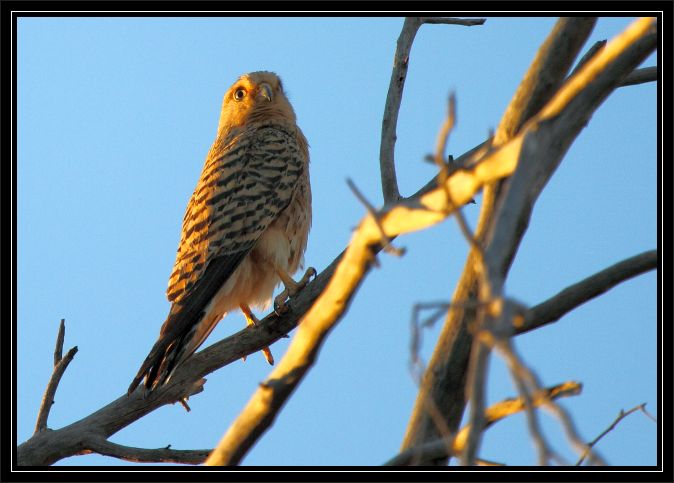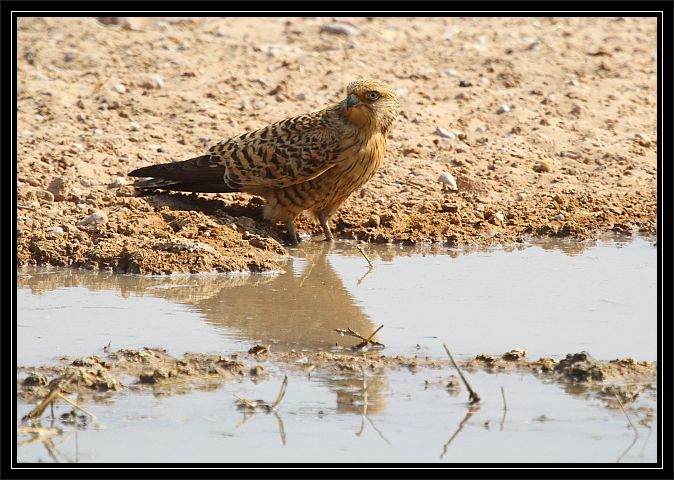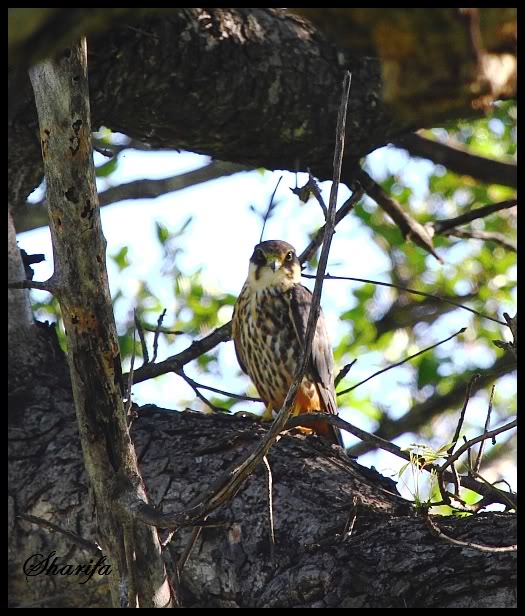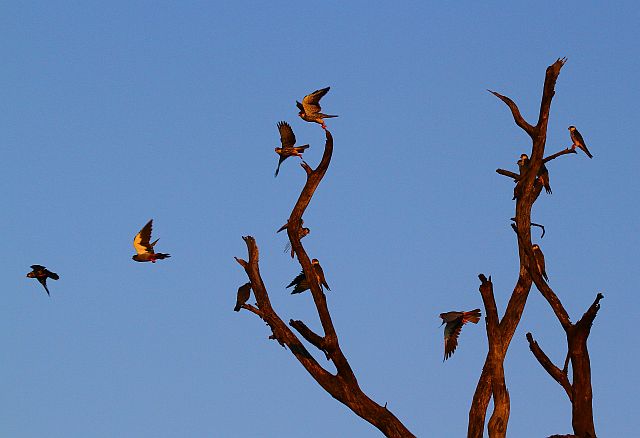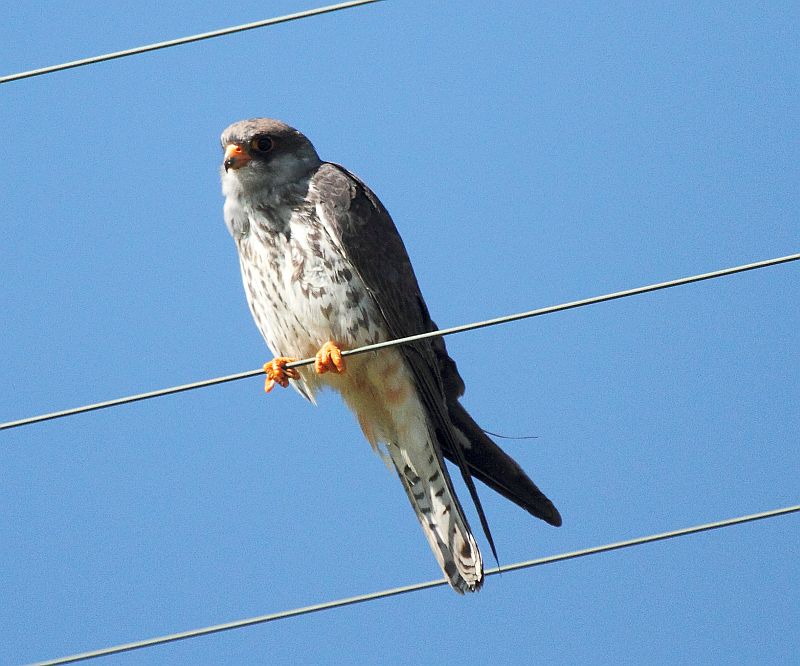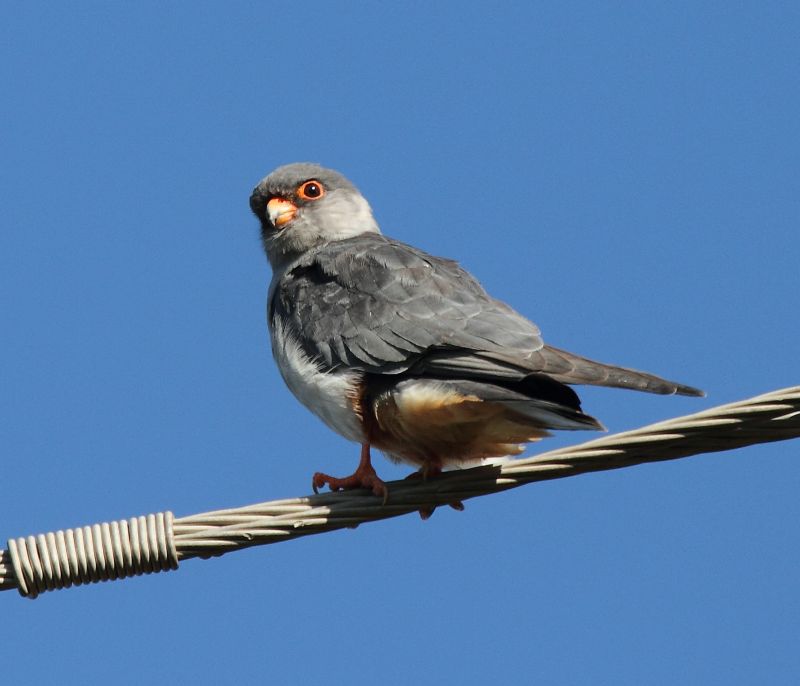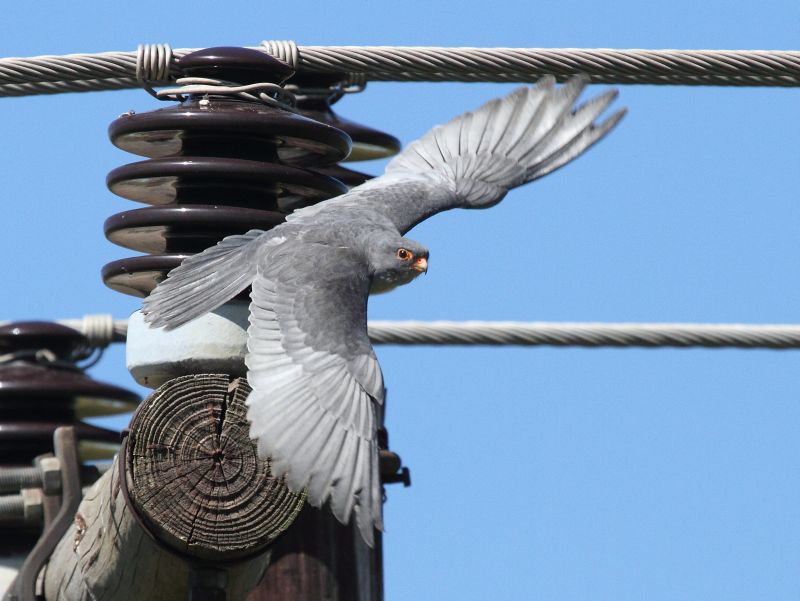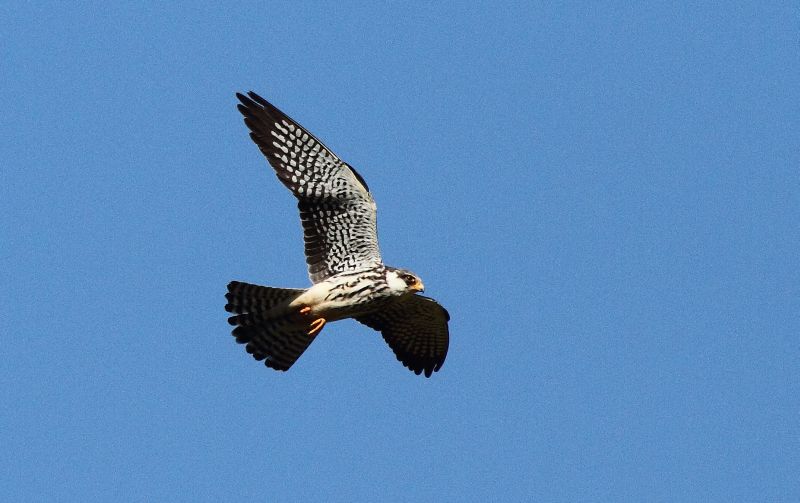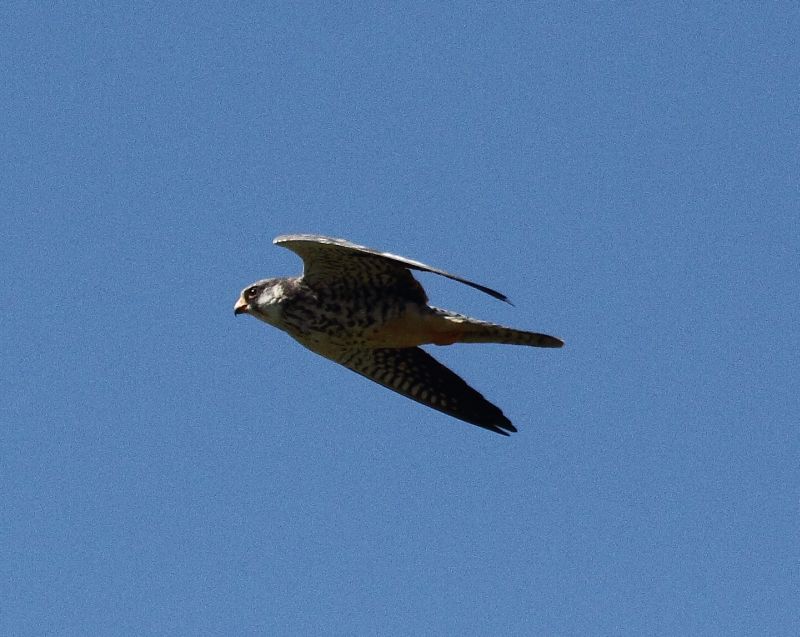Eurasian Hobby Falco subbuteo
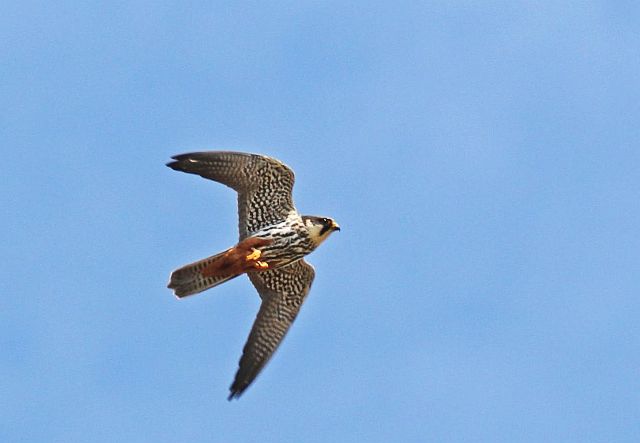 Description
Description
The Eurasian Hobby is a small, slender falcon with a relatively long, square tail, and long, scythe-like wings, giving it the appearance of a large swift in flight. The upperparts and crown are slate grey, while the underparts are whitish or buff, heavily streaked black, with distinctive chestnut thighs and vent, and barred underwings and undertail. A pale throat and pale, double-peaked cheeks contrast with a bold, dark ‘moustache’, and there is a short, thin white streak above the eye. The legs and facial skin are yellow. The male and female Eurasian hobby are similar in appearance, while the juvenile can be distinguished by the browner, more mottled plumage, buff rather than chestnut thighs and vent, and bluish-grey to greenish legs and facial skin.
It resembles the female Amur Falcon. But female and juvenile Amur Falcon have a small white forehead patch, a pale grey crown and paler underwing coverts. African Hobby also resembles Eurasian Hobby but is smaller and has an unstreaked, rufous breast and underparts.
Size
Length: 28 - 36 cm
Wingspan: 69 - 84 cm
Male weight: 131 - 232 g
Female weight: 141 - 340 g
Distribution and habitat
The Eurasian Hobby occurs across Africa, Europe and Asia. Subspecies
Falco subbuteo subbuteo is found in northwest Africa and Europe, east through central Asia and northern China, as far as Kamchatka and Japan, while F
alco subbuteo streichi is found in southern and eastern China, and possibly into South East Asia.
F. s. streichi is mainly sedentary, but
F. s. subbuteo is migratory, wintering in central and southern Africa and southern Asia.
This is a fairly widely distributed nonbreeding migrant to southern Africa. But unlike most other wide-ranging Palearctic migrants, the Eurasian Hobby is generally uncommon. It is found most frequently in northern Namibia and Botswana, Zimbabwe, the northern and eastern Transvaal and Swaziland. Vagrant in KwaZulu-Natal, the eastern and southern Cape Province and the central Transvaal. It is most frequently encountered in woodland areas. It generally prefers open moist woodland and forest edges, sometimes moving into more open habitats to forage, such as coastal dunes and maccia-covered slopes, also occupying suburban areas.The highest reporting rates were in the Eastern Zimbabwe Highlands, Miombo, the Okavango and Northern Kalahari.
Movements and migrations
It arrives in southern Africa from early October onwards. The first birds arrive in Zimbabwe about 10 weeks before reaching the southernmost parts of the
region. In the far southwestern Cape Province, however, arrival times apparently vary widely (late October to mid-February) between years. Departure is more uniform, the last birds leaving from all regions in late March or early April. Movements within southern Africa may be linked to rainfall; the species appears after good rains which stimulate the emergence of large swarms of alate termites, a favoured food item in Africa.
Feeding
It hunts on the wing, often at dusk, using its rapid and acrobatic flight to out-manoeuvre even the most agile prey. The diet consists mainly of flying insects, which are usually eaten in flight, as well as small birds, particularly swallows, martins and swifts. Other prey, such as bats and lizards, are also occasionally taken, and the hobby often follows fires or farm vehicles, which flush out prey. It often associates with other raptors feeding on similar prey, especially emerging termites.
Reproduction
Breeding takes place relatively late in the year, usually from late May to August, allowing the Eurasian Hobby to feed its chicks on an abundance of dragonflies and fledgling birds. During courtship, the breeding pair may perform spectacular aerial food-passes,in which the male passes prey to the female at lightning speed. Two to four eggs are laid, in the disused nest of another species, almost always in a tree. Incubation, which lasts from 27 to 33 days, is mainly performed by the female, while the male hobby does most of the hunting. The young leave the nest at 28 to 34 days, and are dependent on the adults for a further 5 weeks.
